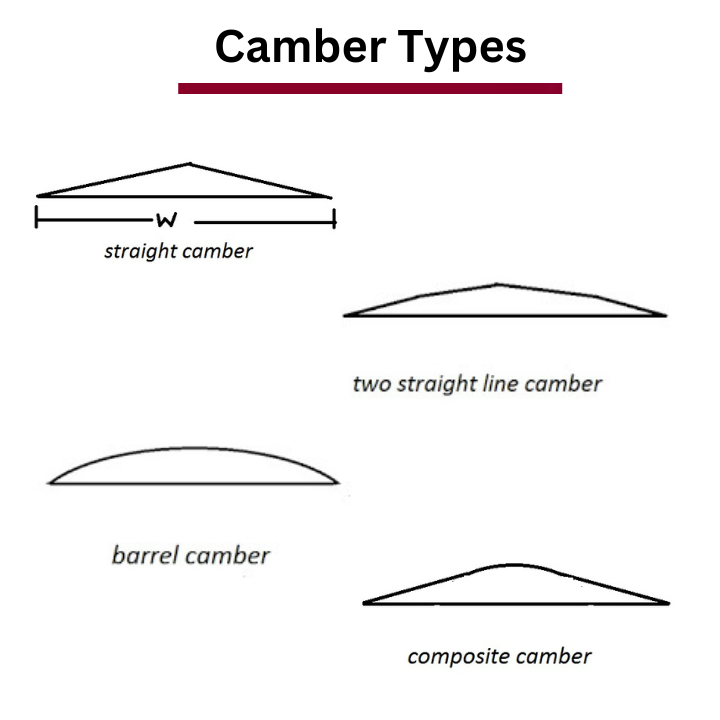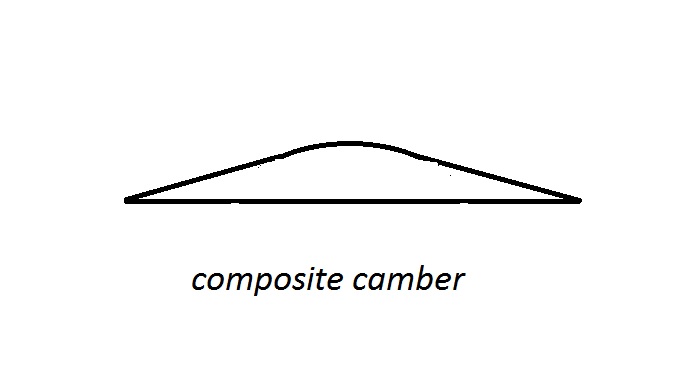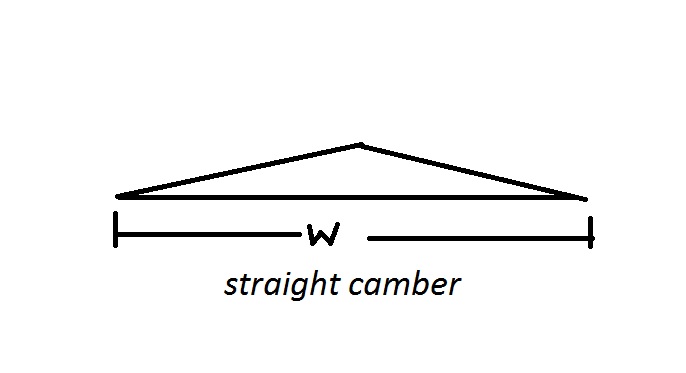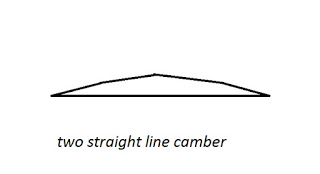The following 4 types of camber are generally provided to the road surface.
- Composite camber.
- Sloped or Straight camber.
- Two straight line camber.
- Barrel camber.

1. Composite camber
It consists of two straight slopes from the edges with a parabolic or circular crown.

2. Sloped or Straight camber
It consists of two straight slopes from the edges joining at the centre of the carriageway. This type of camber is very simple and can be easily constructed. For cement concrete roads, a straight camber is the most suitable camber type.

3. Two straight line camber
It consists of two straight lines steeper near the edges and flatter near the crown, this type of camber is considered to be the best for Indian roads.

4. Barrel camber
It consists of a continuous curve either elliptical or parabolic. This type of camber is preferred for roads used by fast-moving vehicles.
Barrel camber is common for bituminous pavement. And remember that the barrel camber is not possible to construct in the case of concrete roads, hence this type of camber is not used for concrete roads.

Method Of Providing Camber
The required camber is provided to the subgrade, for providing the desired amount and shape of camber, templates or camber boards are prepared with the specified camber. the material to be used in the subgrade is spread and hand paced to the shape of the desired camber.
The rolling is then started from the edge towards the centre. Then checking of the top surface is done with the help of templates or camber boards. the deficiency by spreading or removing the material as required.
Purposes/Objects Of Providing Camber
Camber is provided on the road surface to achieve the following objects:
1. To drain off rainwater from the surface of the carriageway as quickly as possible.
3. To regulate the vehicles to their proper lanes.
4. To improve the architectural appearance of the roadway.
Read Also:
Functions Of Camber Or Cross Slope